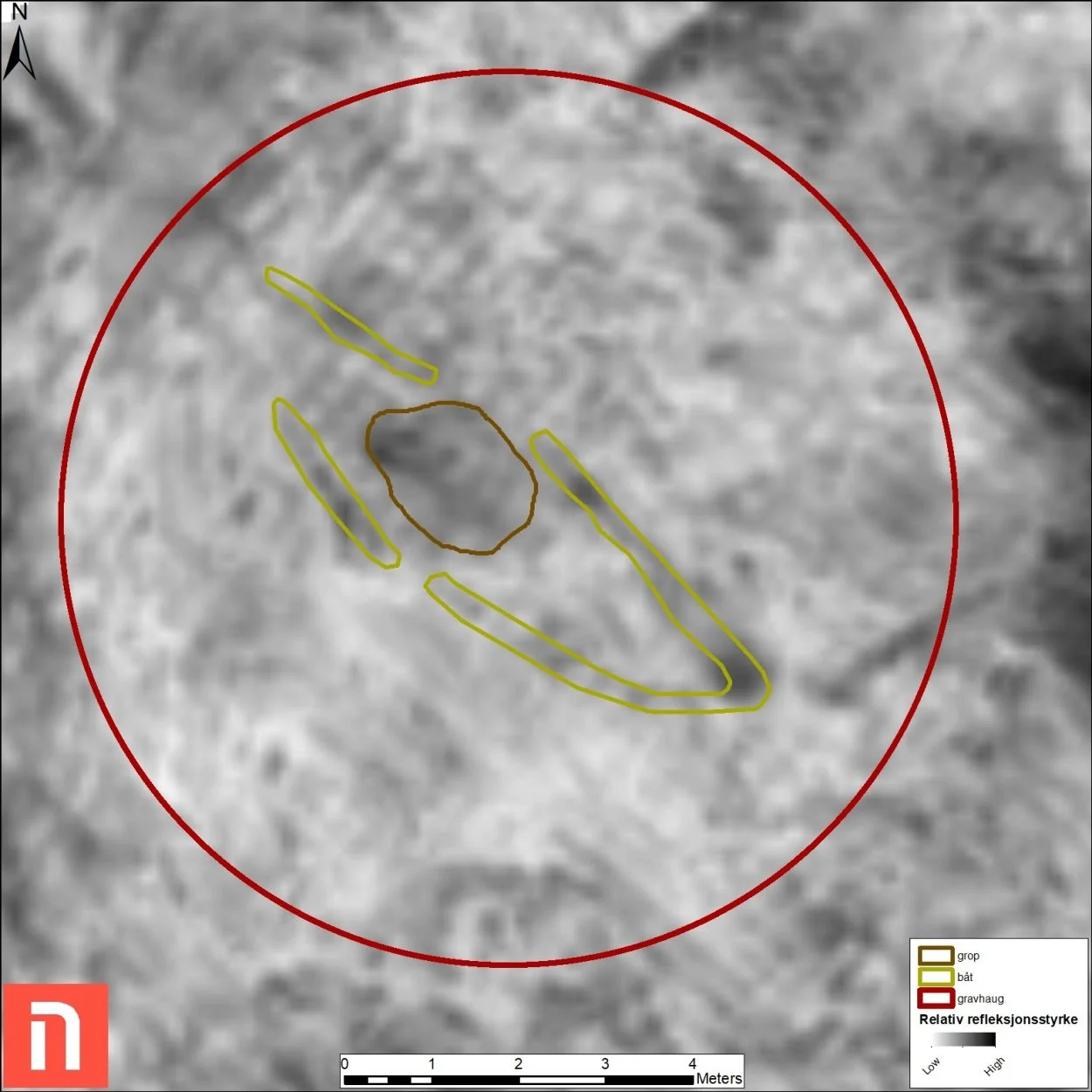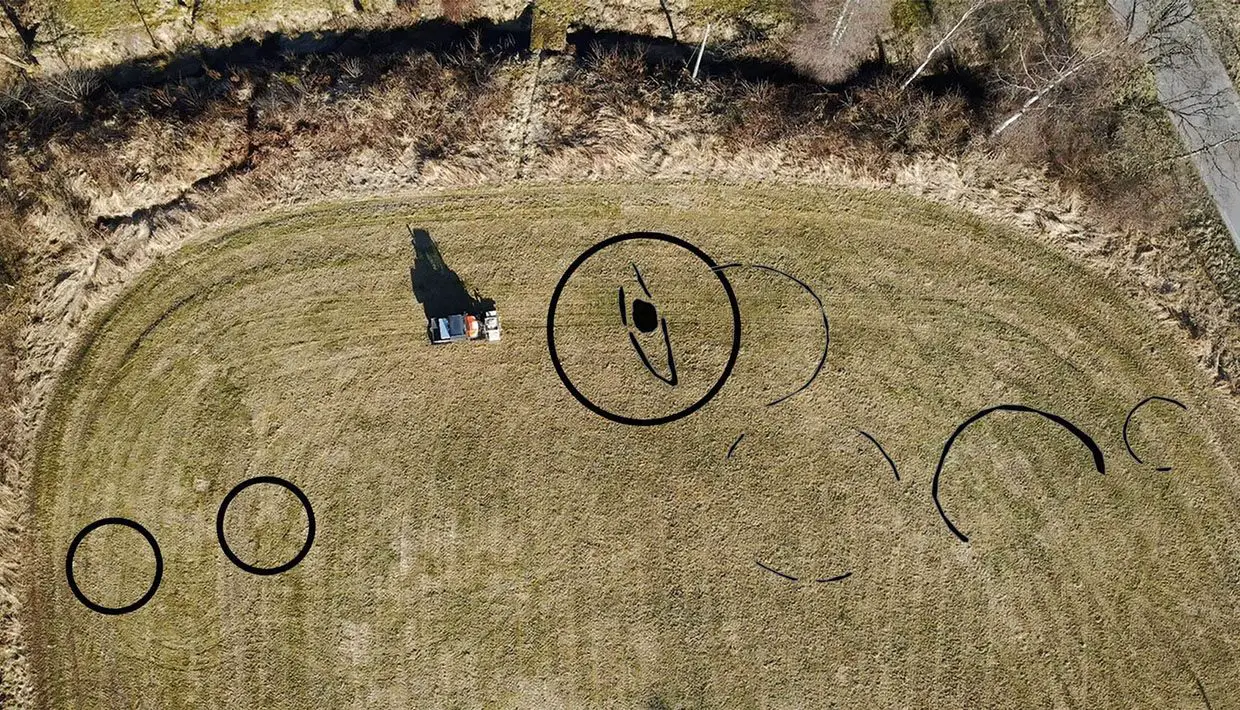Archaeologists have located a boat grave from the Viking Age near Øyesletta in Norway.
A study by the Norwegian Institute for Cultural Heritage Research (NIKU) was undertaken on behalf of Nye Veier and the National Heritage Board.
Archaeologists surveyed the area using Ground Penetrating Radar (GPR) in preparation for the construction of a major new road.
Ground-penetrating radar is a geophysical method that uses radar pulses to image the subsurface. It is a non-intrusive method that allows data to be plotted as profiles, plan view maps isolating specific depths or as three-dimensional models.

The study area was already known for being one of Øyesletta’s largest burial grounds which was active from between 1500 and 2000 years ago.
The survey has now revealed a boat grave in addition to several burial mounds. The boat measures between 8 to 9 metres and was placed in the ground beneath a burial mound. The discovery is the first boat burial to be uncovered in the region and represents a burial custom that existed in the Late Iron Age to Viking Age across many coastal settlements, both in and outside of Norway’s borders.
NIKU archaeologist Jani Causevic said: “This is incredibly exciting. Both in finding such a discovery, but also to see how the use of georadar gives us the opportunity to explore and document cultural history through new and exciting methods.”
Header Image Credit : Jani Causevic, NIKU







